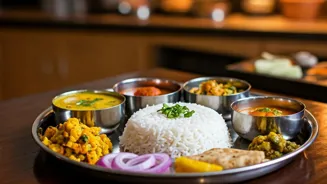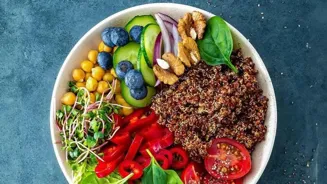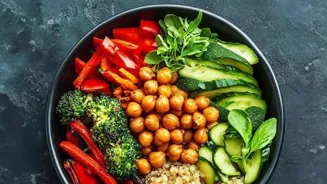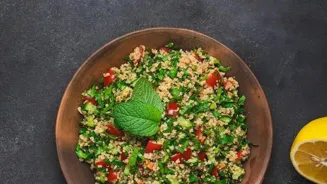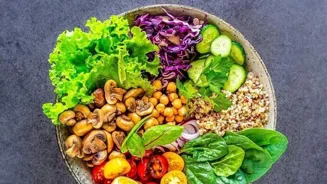Food Chart Basics
Remember the nutrition lessons from childhood? They're still relevant! A balanced diet varies based on age and activity. This approach helps to fight health
issues. The World Health Organisation reported a rise in processed food consumption, urging us to eat more fruits, vegetables, and whole grains for a healthier lifestyle. So, let's get back to the basics, shall we?
Top 10 Foods
Integrate these ten foods into your weekly plan for a healthier you! Pulses, like dal, are protein-packed and rich in fiber. Broccoli and berries are filled with antioxidants. Apples, greens, nuts, milk, yogurt, eggs, whole grains, fish, and meat are great for overall health. Remember, balance is key, so try to eat all these foods within a week.
The Eating Plate
Imagine your plate divided: half filled with colourful fruits and vegetables, a quarter with grains, and the final quarter with protein-rich foods. Season your dishes with moderate oil. It's recommended to have at least five portions of fruits and vegetables daily. This simple approach ensures a balanced intake and helps maintain a healthy weight. It's the key to overall wellness.
Healthy Meal Plans
A balanced diet contributes to overall health. Expecting mothers should emphasize healthy food intake. Adequate nutrients and water maintain body weight. Experts suggest fibre-rich base meals to aid digestion. Children above two should eat what the family does. It's about making smart choices, swapping unhealthy options. Limit salt intake to 5g daily. Easy, right?
Smart Drink Choices
Water is essential, but other drinks can also benefit you. Green tea, black coffee, nut milk, and fresh juices are fantastic choices. These beverages enhance immunity and boost mood. They improve digestion and fight various diseases. Always opt for freshly made drinks, and steer clear of processed juices and carbonated drinks.
